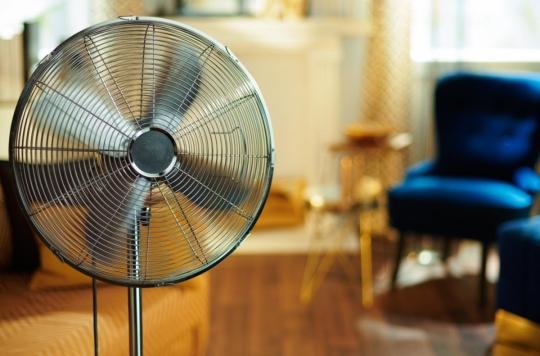Exposure to noise puts people at an increased risk of high blood pressure, hearing impairment or mental illness. However, ventilation systems can be a major source of noise pollution.

- Today, we spend up to 87% of our lives indoors, according to an American study.
- According to the WHO, one in five Europeans is regularly exposed to excessive noise levels at night, which can have consequences for their health.
Silence would be good for health. In any case, it is less harmful than noise. Various studies have shown that excessive exposure to noise pollution can increase the risk of developing certain diseases or even slow down the cognitive development of children. Researchers from the University of Chalmers, located in Sweden, were interested in a major source of noise present both in homes and in public places: ventilation systems. They identified a specific noise produced by these devices, the elimination of which they believe could “significantly improve our physical and mental health”. Their work is published in Physics of Fluids.
A noise called “tonal“
The noise in question occurs when the fan blades rotate, generating sound with a constant and predictable frequency, referred to as noise”tonal“. According to a WHO report, tonal noise of the type that occurs in ventilation systems can have adverse effects on human health. Long-term exposure to this type of sound increases the risk of high blood pressure, cardiac arrest, tinnitus, hearing impairment, sleep disturbances and stress. Children’s cognitive development can also be affected by noise levels from ventilation systems.”The source of the tonal sound has never been identified before on this type of fanexplains Martin Ottersten, industrial doctoral candidate in fluid dynamics at Chalmers University of Technology and lead author of the study in a communicated. When you can lower that tone, the fans become extremely quiet and, in that regard, unique. This is the first time that someone has succeeded in both identifying and eliminating the source of the noise.”
Less noise and more efficiency
“I am sensitive to sound and sometimes have difficulty concentrating and sleeping with disturbing soundssays Martin Ottersten. And I know that tonal sound can mess with our brain. When I read the WHO reports on how tonal sound can also lead to diseases such as high blood pressure and even cardiac arrest, this work took on a whole new dimension.” For four years, he researched the source of this noise, relying in particular on advanced computer calculation systems. The calculations provided audio data on the ventilator, which was used to locate the source of the tones. After several trials, he designed a fan in such a way that the tonal sound decreased significantly. “We also observed that the efficiency of the fan increases as the tonal sound decreases”, adds the scientist. Ultimately, he wants to commercially develop his prototype for “contribute to creating healthier indoor environments, while helping to reduce energy consumption and carbon dioxide emissions”.















